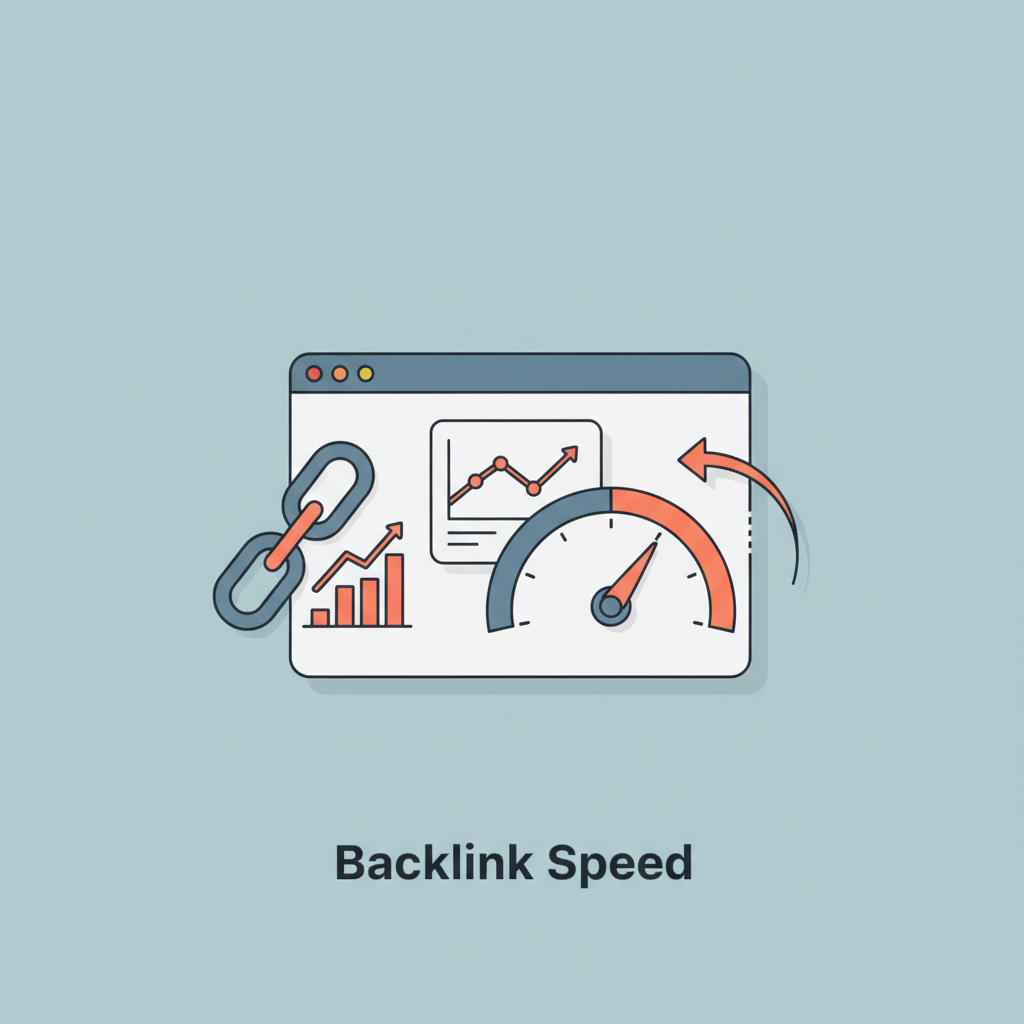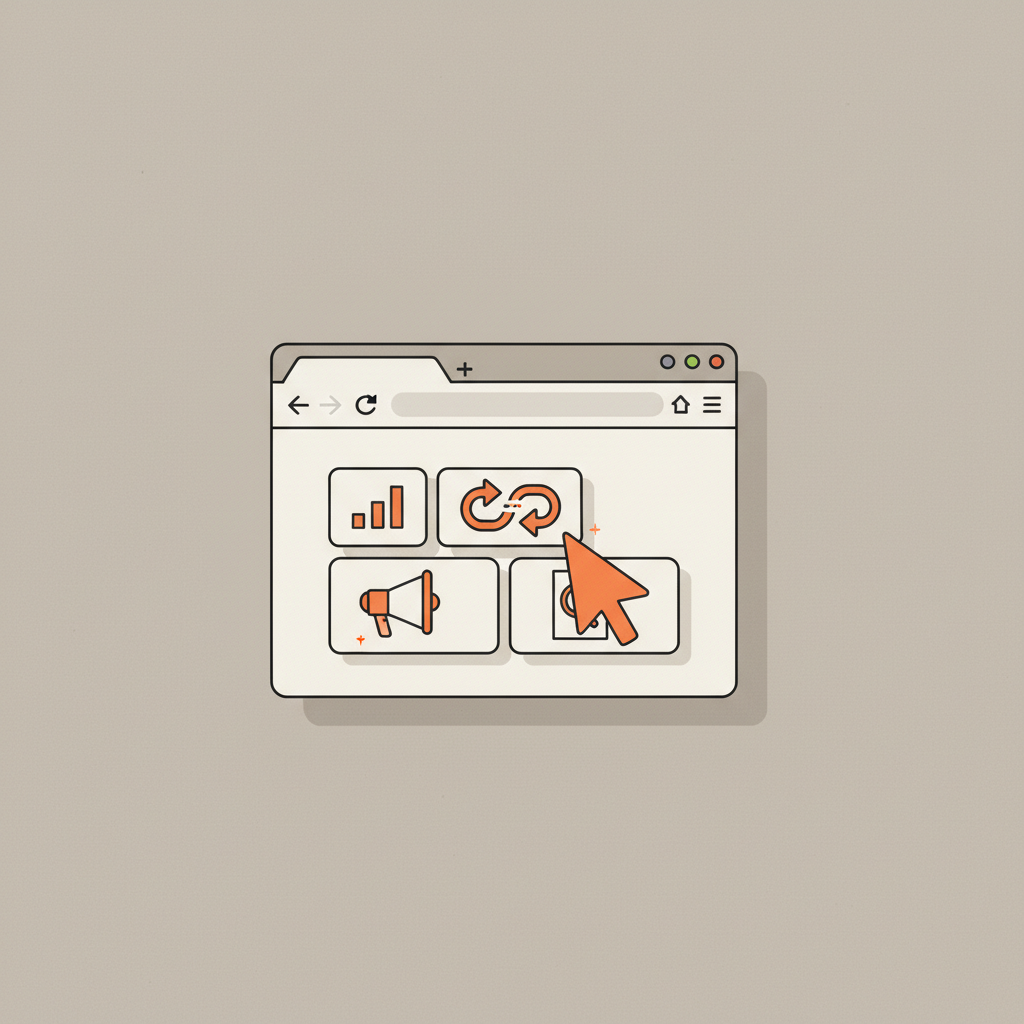Introduction: Beyond Chasing Numbers
In the world of SEO, few metrics are as obsessed over as backlinks. This obsession with speed often leads to conflicting advice, risky tactics, and the dangerous pursuit of arbitrary numbers. Many fall into the trap of believing that a faster link-building pace automatically equals better rankings, often resorting to low-quality or black-hat strategies that can get their site penalized.
This guide is designed to dismantle that myth. We’re going to redefine what “backlink speed” truly means. It’s not a number you chase; it’s a natural outcome you cultivate. The ideal link-building pace isn’t about hitting a monthly quota of 10, 20, or 50 links. It’s about creating a system—an authoritative digital asset—that attracts high-quality, relevant links naturally and sustainably over time. This comprehensive roadmap will walk you through every stage, from laying the foundational groundwork to executing advanced strategies, all through the lens of building a site that is inherently “link-worthy.” Forget the shortcuts and prepare to build an authority engine that sets its own perfect pace.
Part 1: Laying the Foundation for a Link-Worthy Site
Before you can even think about acquiring a single backlink, you must build something worth linking to. The speed and quality of your future link acquisition are determined right here. The goal is to position your website as a go-to authority in a specific space.
This begins with finding your niche, but with a specific filter: link-worthiness. You must analyze it through the ‘niche trifecta’: passion, expertise, and market demand. Passion fuels consistency, expertise ensures your content is credible, and market demand guarantees an active audience and link prospects. To validate a niche’s link potential, use Google Trends to gauge interest and analyze competitors to see if their successful sites have strong backlink profiles.
Once your niche is validated, you must define your ideal reader with a detailed persona. When you create content that solves a specific problem for a specific person, it resonates. Resonant content is shareable content. Shareable content earns links. This foundational work doesn’t build links directly, but it creates the fertile ground from which a healthy, natural backlink profile will grow at a sustainable pace.
Part 2: The Technical Setup Made Simple
A solid technical foundation is the price of admission for earning high-quality backlinks. A reputable editor at a major publication won’t link to a site that is slow, insecure, or broken on mobile. Getting the technical aspects right isn’t just about user experience; it’s about link-worthiness.
Your choice of platform is critical. A self-hosted WordPress.org site is the undisputed professional standard, giving you complete control over SEO. For hosting, reliability and speed are non-negotiable. Investing in quality managed WordPress hosting or a VPS hosting ensures your site loads quickly, a critical factor.
Finally, your initial WordPress setup should be lean and optimized for speed and security. Start with a lightweight theme (like Kadence or GeneratePress) and install only the essential plugins:
| Plugin Category | Example Plugins | Purpose |
| SEO | Rank Math or Yoast SEO | To optimize on-page elements and technical SEO. |
| Caching | WP Rocket or LiteSpeed Cache | To dramatically improve site speed and load times. |
| Security | Wordfence or Sucuri | To protect your site from malware and attacks. |
| Spam Protection | Akismet | To keep your comments section clean and professional. |
Export to Sheets
Getting these technical details right ensures that when a potential linker lands on your site, their first impression is one of professionalism, speed, and authority.
Part 3: Developing a Content Strategy That Attracts Links
Content is the engine of your link-building machine. Your backlink speed is directly proportional to the value and link-worthiness of the content you produce. The goal is to stop thinking about content as just a collection of articles and start treating it as a library of valuable assets designed to attract links naturally over time.
To attract links, you must primarily target informational keywords. These are the queries where users—and other content creators—are looking for definitive answers, comprehensive guides, and expert insights. Finding low-competition keywords with high informational value is the sweet spot.
The most powerful strategy for this is building content pillars and topic clusters. A pillar page (or cornerstone content) is a long, comprehensive guide covering a broad topic (e.g., “The Ultimate Guide to Container Gardening”). Cluster posts are shorter, more specific articles that link back to the pillar page. This model establishes your site as a topical authority and creates a powerful, central asset that is highly linkable.
To execute this consistently, use a content calendar. Planning your content—pillars and clusters—months in advance ensures you are systematically building your authority.
| Month | Pillar Content Idea | Supporting Cluster Content Ideas |
| January | The Complete Guide to SEO Audits | How to Check for Broken Links, A Beginner’s Guide to Core Web Vitals, 10 On-Page SEO Elements to Review |
| February | Mastering Content Marketing in 2024 | How to Create a Content Calendar, 5 Ways to Repurpose Blog Content, Writing Headlines That Convert |
| March | A Deep Dive into Email Marketing | Choosing an Email Service Provider, How to Write a Welcome Email Series, 7 Lead Magnet Ideas to Grow Your List |
Export to Sheets
This strategic approach turns your blog from a simple publication into a magnet for backlinks, setting a steady, sustainable pace for link acquisition.
Part 4: The Modern Content Creation Workflow
To achieve a consistent backlink velocity, you must consistently produce content that is worthy of being linked to. A modern, streamlined workflow is essential for producing high-quality, comprehensive, and optimized content at scale.
Ethically leverage AI tools like ChatGPT or Claude as an intelligent assistant. Use AI for brainstorming topic ideas, generating outlines, and suggesting different angles. You provide the expertise, the unique insights, and the fact-checking; AI provides the structural scaffolding.
Next, use content optimization software like SurferSEO or Clearscope. These tools analyze the top-ranking pages for your target keyword and provide a data-driven blueprint for what your article needs to cover. They help you avoid knowledge gaps and ensure your content is more thorough and valuable than the competition.
This workflow—human expertise augmented by AI for structure and optimization software for comprehensiveness—allows you to produce better content, faster. This increased output of high-quality, linkable assets is the direct fuel for increasing your backlink speed.
Part 5: Advanced SEO Strategies Competitors Ignore
Once you start acquiring backlinks, true SEO mastery lies in creating a site structure that amplifies the authority passed by every single link.
First, master on-page SEO. This ensures your page is an attractive target for linkers and that Google understands exactly what your page is about. A simple on-page SEO checklist is crucial:
- Title Tag: Compelling and contains the primary keyword near the beginning.
- Meta Description: Accurately summarizes content and entices clicks.
- URL: Short, clean, and descriptive.
- Headings (H1, H2, H3): Structured logically.
- Image Alt Text: Descriptive alt text for accessibility and SEO.
- Semantic Keywords: Inclusion of related terms (LSI keywords) to demonstrate topical depth.
The most powerful and often-ignored strategy is a meticulous internal linking structure. When a high-quality backlink hits one of your pages (e.g., your pillar content), that page receives a boost in authority, or “link equity.” By linking from that pillar page to your relevant cluster posts, you pass a portion of that authority onward. This smart internal linking strategy acts as a circulatory system for your website, distributing power from your hard-earned backlinks across your entire site.
Part 6: From Traffic to Tribe: Building a Loyal Community
In the quest for backlinks, don’t overlook one of the most powerful, long-term sources of natural links: a loyal community. This tribe becomes a link-generation engine that operates on its own.
Your email list is your single greatest asset. Choose a reputable email marketing provider and create a compelling lead magnet (e.g., an ebook or checklist). Nurture the relationship by sharing exclusive insights and asking for feedback. When you publish a major new piece of content, your engaged email audience is far more likely to share it and link to it from their own blogs, generating that crucial first wave of natural links.
Social media should be used strategically to foster engagement and conversation. Focus on the one or two platforms where your ideal reader spends their time. By establishing yourself as a helpful and active member of the community, people will start to see you as a go-to resource and naturally link to your website when relevant topics arise.
Part 7: The Business of Blogging: Smart Monetization Models
How you choose to monetize your site can have a direct impact on your backlink speed. Avoid simple display advertising, which rarely contributes to authority. A smarter approach adopts models that not only generate revenue but also naturally attract high-quality backlinks.
This can be visualized as a “Monetization Ladder”:
| Monetization Model | Link-Building Potential | Description |
| Display Ads | Very Low | Can clutter user experience and rarely attracts links. |
| Affiliate Marketing | Medium | High-quality reviews and comparison posts can earn links. |
| Digital Products | Medium-High | Selling your own ebooks or courses. Free introductory content can attract links. |
| Linkable Assets | Very High | Creating free tools, industry studies, or data-rich reports that serve as citable resources. |
Export to Sheets
The ultimate strategy for accelerating backlink speed is the creation of “linkable assets.” These are resources so valuable that other websites feel compelled to link to them. Examples include Free Tools, Industry Surveys, Data-Driven Case Studies, and Comprehensive Infographics. These assets provide enormous SEO value that lifts your entire website.
Part 8: Tracking Your Growth with Data
To truly understand and optimize your backlink speed, you need to track your progress with data using specialized backlink analysis tools like Ahrefs, Semrush, or Moz.
Here are the key metrics to track:
| Metric | Description | Why It Matters |
| Referring Domains (RDs) | The number of unique websites linking to you. | This is the most important metric. Tracking the growth of RDs over time is the truest measure of your link velocity. |
| Domain Rating/Authority (DR/DA) | A score that predicts a site’s overall backlink authority. | A steady increase indicates your link-building efforts are working. |
| New & Lost Backlinks | A report showing which links you’ve recently gained or lost. | Helps you understand what’s working and identify potential issues that need to be addressed. |
| Anchor Text Distribution | The clickable text used in your backlinks. | A diverse, natural backlink profile is crucial; over-optimized anchor text is a red flag for Google. |
Export to Sheets
Frequently Asked Questions About Backlink Speed
How many backlinks should I build per month?
This is the wrong question to ask. There is no magic number. Focus on consistently executing the strategies that attract links. Your ideal backlink speed is the natural result of these efforts. A slow but steady growth of high-quality referring domains is far better than a rapid spike of low-quality links.
Can building links too fast get you penalized?
Yes, absolutely. Acquiring a large number of backlinks in a very short period, especially if they are low-quality, spammy, or from private blog networks (PBNs), is a massive red flag for Google. This unnatural velocity is a clear footprint of manipulative link schemes, which can lead to a manual penalty or algorithmic suppression of your rankings.
How long does it take for a backlink to have an effect?
The impact of a backlink is not instantaneous. It can take anywhere from a few days to several months for Google to crawl the linking page, process the link, and pass authority to your site. High-authority links tend to have a faster and more significant impact.
Conclusion: Your Journey as a Blogger Starts Now
We’ve journeyed through the entire process of building an authoritative website, all viewed through the critical lens of backlink acquisition. The core message is clear: the ideal backlink speed is not a number you chase, but a rhythm you earn. It’s the natural, sustainable pace at which the digital world recognizes and rewards the value you create. Success comes from a solid technical foundation, a relentless focus on creating link-worthy content, and a genuine effort to build a community around your brand.
This might feel overwhelming, but the journey of a thousand miles begins with a single step. Start small: today, solidify your niche and plan out your first pillar content piece. Your backlink speed will naturally follow.



